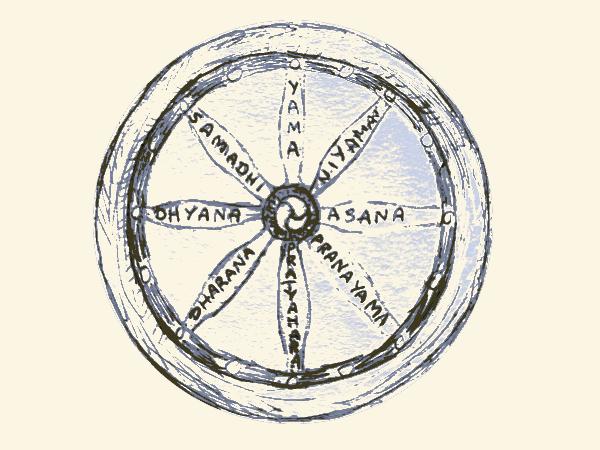This is a (VERY) brief overview of what Patanjali’s 8 limbs of yoga are, as I keep referring to them in other posts. I will include more detail later. The first four are fairly straightforward and made up of clear ideas, 5-8 are harder to define and could be discussed for many days so I will limit them to a sentence or two.
1. Yama – Self Restraint
Essentially a set of guidelines to be at peace with the world and people around you.
Ahimsa – Non-violence to one’s self or others
Satya – Truthfulness
Asteya – Non-Stealing
Brahmacharya – Living life Divine (some say this is sexual continence, many differing views on this)
Aparigraha – Non-possessiveness
2. Niyama – Fixed Observance
More focused on being good to yourself, and evaluating what you need
Saucha – Pure Food, Body, and Mind
Santosha – Contentment
Tapas – Austerity / inner desire to know one’s self
Swadhaya – Self Study
Isvanapranidhana – Love for the divinity within
3. Asana – Posture
Yoga postures promote a healthy flow of Prana (energy) through the body, helping to rid us of ailments to allow the mind to meditate.
4. Pranayama – Breath Regulation
It is said that the breath is the bridge from the body to the mind. There are many techniques that can be practiced in combination with postures to promote health and energize the body.

5. Pratyahara – Sense Withdrawal
It is said that many people in some way are a slave to their senses and desires, only when you can withdraw from this at will is the mind fit for meditation.
6. Dharana – Concentration
These are concentration techniques, you may have heard of meditation workshops, but it is not actually possible to teach meditation as it is a state of mind, you will instead be taught concentration techniques designed to lead you to meditation. It is in this stage that many of the ‘epiphany’ moments happen about who am ‘I’. Many people get stuck here.
7. Dhyana – Meditation
Can be described as effortless concentration, where you no longer have to focus on a technique to empty the mind. You lose the sense of I
8. Samadhi – Bliss (no direct translation)
Sometimes described as enlightenment, there is no real way to put this into words (especially not from me as I am not there) There is the idea that as soon as you try to define this state, it loses what it truly is. I suppose it would be something different for everyone.
So there we have it, there is lots more information on the 8 limbs of yoga if you want to find out more, but this is a good start.
Next Chapter>> Applying the 8 Limbs of Yoga to your Practice
Clarification! All Posture Based Yoga Practice Is Hatha Yoga? <<Previous Chapter